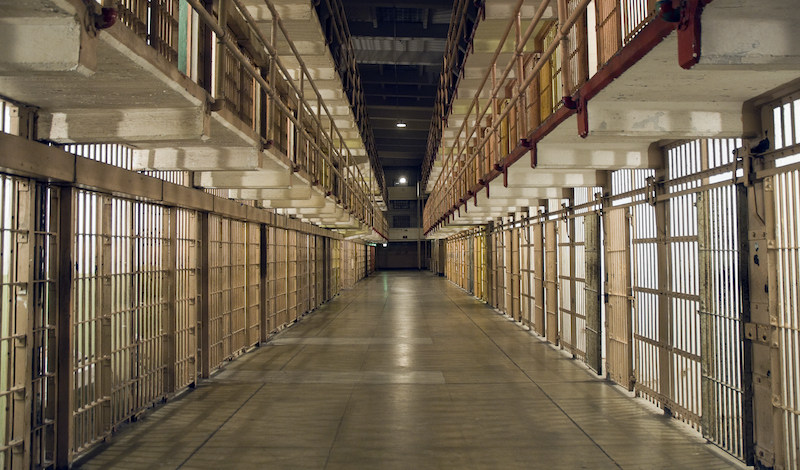
Scholars discuss how administrative failures block incarcerated people from accessing relief.
Saferia Johnson, a 36-year-old mother, was incarcerated in a minimum-security federal prison when the COVID-19 pandemic began ravaging correctional facilities. She suffered from long-term preexisting conditions and was a non-violent offender, making Ms. Johnson a good candidate to complete her confinement at home under U.S. Department of Justice guidelines. After the Federal Bureau of Prisons denied her petition for home confinement, Ms. Johnson petitioned a federal court for compassionate release. Before a court could grant this relief, Ms. Johnson died in prison from COVID-19.
Jenny Roberts, professor at American University Washington College of Law, shared Ms. Johnson’s story during a panel she moderated for the Administrative Law Review about administrative challenges to decarceration. Roberts emphasized the burden that administrative processes can place on incarcerated people—effectively denying them access to mechanisms intended to reduce or avoid time spent in custody.
As in Ms. Johnson’s case, incarcerated people seeking federal relief must first exhaust all of their administrative remedies within the Bureau of Prisons and wait 30 days before they can attempt to access the courts. Roberts argued that these individual-based administrative processes fail to “effectuate the rapid release of large numbers of individuals,” even in response to large-scale crises.
Three panelists shared their expertise on a few of these consequential administrative obstacles to government decarceration efforts.
First, Jason Williamson of NYU Law focused on administrative problems within public defense systems. According to Williamson, most public defense systems are ineffective because defense attorneys must navigate administrative hurdles “to represent their clients in the way the constitution requires.”
In the most common model of public defense in the United States, attorneys, law firms, and nonprofit organizations bid for government contracts. Williamson explained that typically some combination of courts, a local administrative body, a county commission, and sometimes prosecutors decide who receives those contracts. According to Williamson, this process presents the first administrative problem in the public defense context—defense attorneys are often selected by people and entities that have varying, and sometimes opposing, interests in criminal cases.
Once selected, defenders must jump through an “extraordinary number of hoops” to receive the funding required to represent their clients effectively, Williamson noted. Often, defenders must return to the same body that selected them and demonstrate a “real need” for requested resources. According to Williamson, contracting defense attorneys must be strategic about when to ask for additional resources from a limited pot of money. This system raises questions about the ability of attorneys to defend their clients zealously when their funding requests run through the same people who will make decisions about their client’s future, who will decide if their contract will be renewed, and even at times who will oppose them at trial. Williamson concluded that “because of these administrative hurdles, you have a system that is bound to fail.”
Next, Ji Seon Song of the University of California, Irvine School of Law discussed her research on the role of hospitals in expanding the carceral state. According to Song, police work routinely undermines hospital regulations and guidelines. When patients are the subjects of criminal investigations, law enforcement officers are granted broad access to hospital. Song asserted police sometimes question trauma patients while doctors attempt life-saving interventions. She explained that police will also search patients’ belongings, follow doctors into testing sites, and observe diagnostic testing. Police can even request doctors perform medical procedures to recover evidence.
Furthermore, when incarcerated people require medical attention outside of correctional facilities, police use of force policies override hospital medical procedures. For example, Song claimed that a correctional officer can hit a patient to subdue them, even in a hospital, if their use of force policy allows it.
Finally, Kathryn Miller of Cardozo Law described the administrative challenges inherent in probation and parole decisions. Probation—a post-conviction sentence meant to address some of the challenges that led to conviction—was designed to replace incarceration. But Miller noted that the state’s use of probation has expanded exponentially in the last few decades, with courts applying it to individuals who would not have otherwise been incarcerated.
And in many cases, instead of connecting people to services and employment, probation is a barrier to those goals, Miller claimed. Probation officers have the discretion to require excessive meetings, programming, or anything else they deem necessary. Miller emphasized that often “the process is the punishment.”
In addition, probation officers often have the sole discretion to claim individuals are in violation of their probation—a claim that initiates a court hearing to determine if the person should be incarcerated. So, Miller argued, the criminal justice system uses probation processes to increase, rather than decrease, incarceration and surveillance. This is especially true, she claimed, in Black and Brown communities.
Miller argued that parole presents additional administrative challenges to decarceration efforts. Parole is a mechanism through which a parole board can release individuals from incarceration. Although parole boards—typically consisting of political appointees—have guidelines to consider, they also have a lot of discretion in their decision making.
When an incarcerated person is denied parole, they must file an appeal to exhaust their administrative remedies before they can access court remedies. In New York, where Miller practices, these appeals go back to parole boards, which almost never overturn their previous decisions. Miller claimed that these administrative appeals serve only as hurdles that can block incarcerated people’s access to relief in the courts if not taken. Once incarcerated people do get to court, judges must provide extreme deference to the previous decisions of the administrative actors, who had wide discretion to do what they wanted in the first place. Miller emphasized that incarcerated people who challenge the parole decisions of administrative actors rarely succeed.
Roberts contended in her opening remarks that decarceration is appropriate, especially in the country with the most incarcerated people in the world. But as each panelist outlined, many administrative obstacles impede state decarceration efforts.



